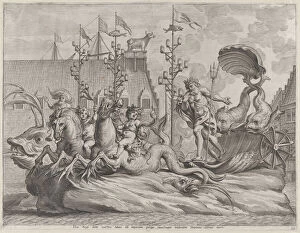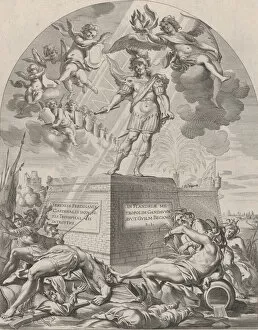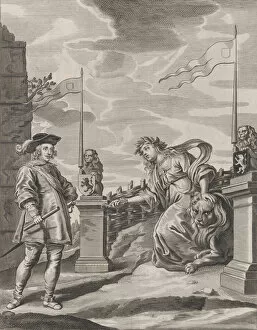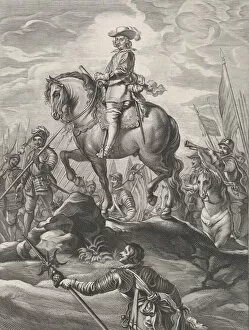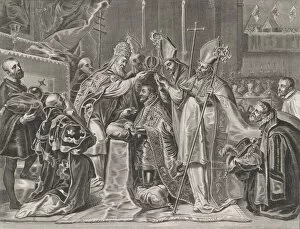Meursius Collection
"Meursius: Unveiling the Legacy of a Dutch Classical Scholar and Antiquary" Step into the world of Johannes Meursius (1579-1639
All Professionally Made to Order for Quick Shipping
"Meursius: Unveiling the Legacy of a Dutch Classical Scholar and Antiquary" Step into the world of Johannes Meursius (1579-1639), a renowned figure whose contributions to academia and history have left an indelible mark. Plate 35 captures the grandeur of Philip of Spain as Neptune, riding in a chariot drawn by two majestic sea horses, symbolizing his power over the seas. In Plate 1, Ferdinand stands tall as Mars on a pedestal, embodying strength and valor. This depiction is from Guillielmus Becanus's work, showcasing Meursius's fascination with historical figures. Plate 6 showcases Ferdinand receiving the keys to the city of Ghent—a momentous occasion that highlights his influence and authority. As we move to Plate 8, we witness Ferdinand crossing the treacherous Alps on horseback—an awe-inspiring feat captured through Guillielmus Becanus's lens. The bond between Ferdinand and the King of Hungary is beautifully depicted in Plate 10 as they ride together gallantly. The coronation scene in Plate 24 portrays Charles V being crowned Emperor by the Pope—an event that shaped European history forever. Another captivating image can be found in Plate 20 where Charles V and Ferdinand are seen mounted on horseback—two brothers united in their pursuit of greatness. Beyond these regal portrayals lies another facet of Meursius's life—the fencing school at Leiden University. Known for his scholarly pursuits, he also had an affinity for physical activity such as fencing. The Fencing School at Leiden University was not only a place for honing one's skills but also served as a hub for intellectual exchange among students. Johannes Meursius was more than just an antiquary; he was a multifaceted individual who delved into various realms—from classical scholarship to historical documentation—and even embraced physical pursuits like fencing.

